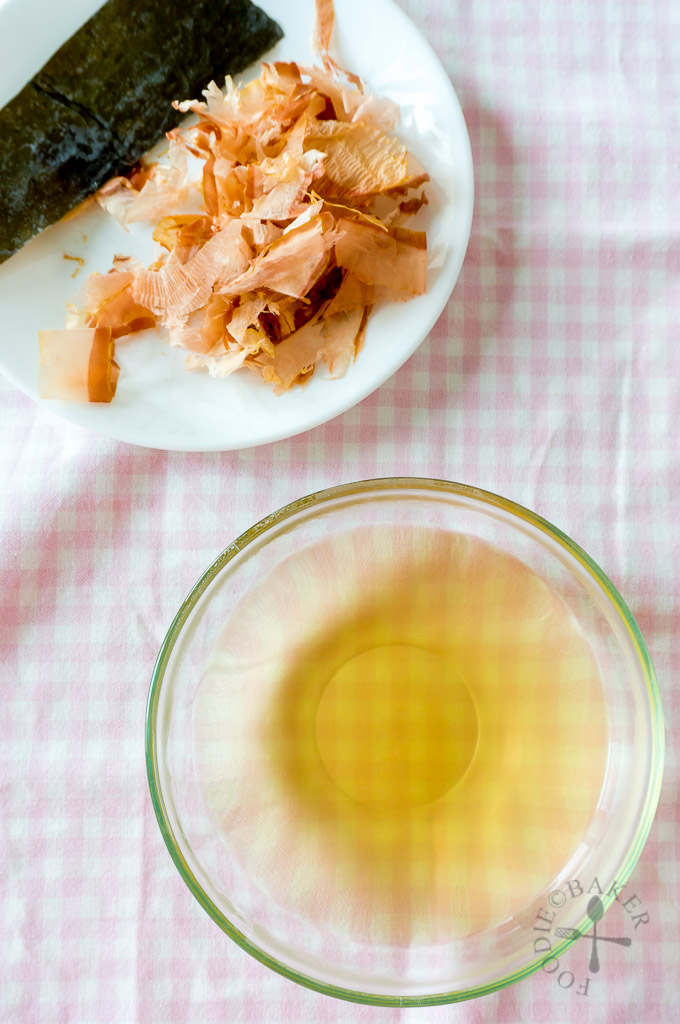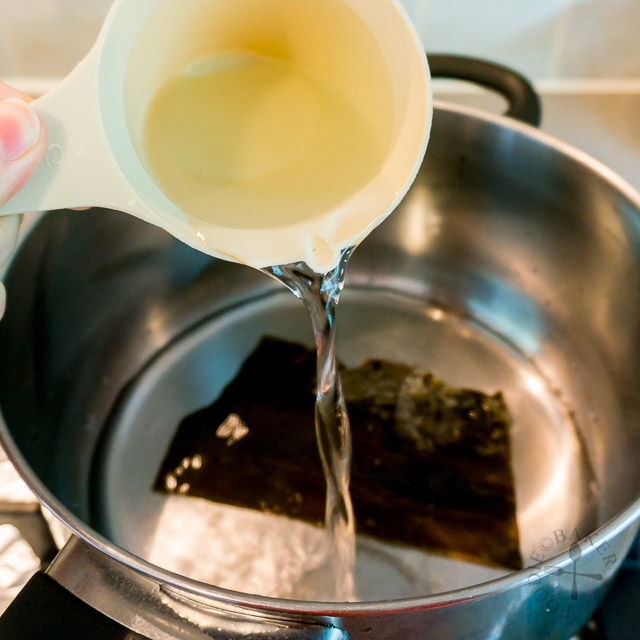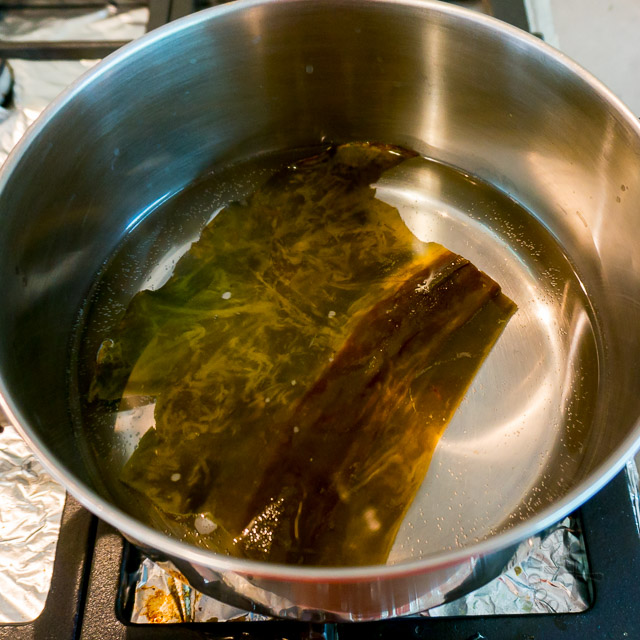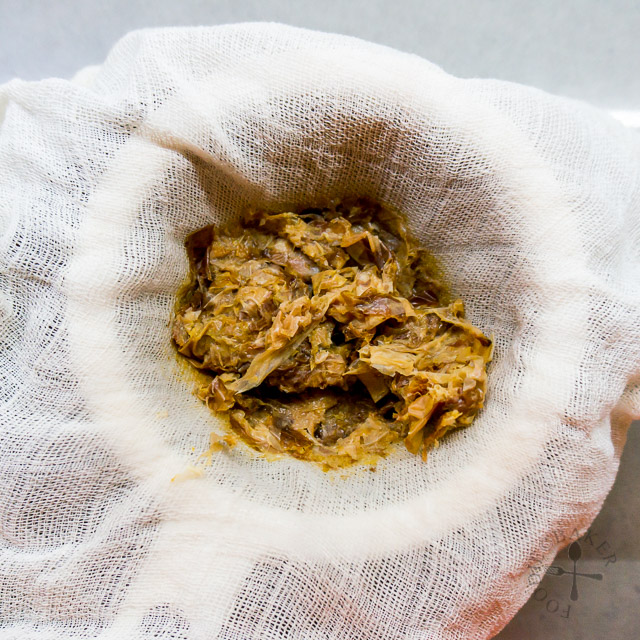
Dashi is a type of stock used commonly in Japanese cuisine. It is the base of miso soup, Japanese stews, chawanmushi and many other Japanese dishes. There most common dashi is made with kombu (dried kelp) and katsuobushi (dried bonito flakes) and this will be the one that I’ll be sharing today.
Ichiban Dashi (ichiban means “first”) is made with fresh kombu and katsuobushi. It has a delicate yet intense umami flavour, and is best used in dishes where its flavour is desired, such as chawanmushi. Of course it can also be used in miso soups and other stews, but it will be a waste because its flavour will be overwhelmed by miso or the meat and vegetables used in the stew.
Niban Dashi (niban means “second”) is made with the used kombu and katsuobushi. The kombu and katsuobushi is re-boiled with more water, yielding a lighter and less intense stock. Some recipes will add just a bit more of katsuobushi to boost the flavours. For me, I add in dried shiitake mushrooms as the shiitake mushrooms will add additional flavour and I can use the rehydrated shiitake mushrooms in other dishes (such as chawanmushi!) It is usually used for miso soups, Japanese stews and even in dishes where only a little stock is required like Oyakodon.

I don’t have any other photos of the dashi so here’s a photo of the perfectly silky chawanmushi that I made with Ichiban Dashi. I will be blogging about it in a few days time so stay tuned if you want the recipe! But for now, here are the step-by-step photos and recipe!
Step-by-Step Photos | |
|---|---|
 |  |
| 1) Combine water and dried kelp in a pot. | 2) Heat over medium heat until the water is almost boiling - bubbles beginning to appear on the sides of the pot. Remove the dried kelp and set aside. |
 |  |
| 3) Add the dried bonito flakes into the pot and give it a gentle stir to make sure all the bonito flakes are submerged in water. | 4) Bring to a boil over medium heat, then turn off the heat. Let the bonito flakes sit for 10 minutes. |
 |  |
| 5) Place a sieve over a big bowl and line a cheesecloth on top. Strain the dashi over the cheesecloth. | 6) Pick up the edges of the cheesecloth, twist it and squeeze the bonito flakes to extract every last bit of dashi (be careful as it will be very hot!). |
 | |
| 7) Make niban dashi! (As the steps are similar as ichiban dashi, I did not take additional photos, so see recipe below!) |
Dashi
INGREDIENTS
Ichiban Dashi
- 750 ml water
- 1 piece dried kelp / kombu, 3×2-inch
- 20 grams dried bonito flakes / katsuobushi, 1 handful
Niban Dashi
- 1 litre water, 1 litre
- 4 shiitake mushrooms, optional
INSTRUCTIONS
Ichiban Dashi
- Combine water and dried kelp in a pot. Heat over medium heat until the water is almost boiling – bubbles beginning to appear on the sides of the pot. Remove the dried kelp and set aside.
- Add the dried bonito flakes into the pot and give it a gentle stir to make sure all the bonito flakes are submerged in water. Bring to a boil over medium heat, then turn off the heat. Let the bonito flakes sit for 5 minutes.
- Place a sieve over a big bowl and line a cheesecloth on top. Strain the stock over the cheesecloth. Pick up the edges of the cheesecloth, twist it and squeeze the bonito flakes to extract every last bit of goodness (be careful as it will be very hot!).
Niban Dashi
- Add the set aside kelp and the bonito flakes in the cheesecloth back into the pot. Add in water and shiitake mushrooms (if using).
- Cover the pot with a lid then bring to a boil over high heat. Turn the heat down to a simmer and simmer for 10 minutes. Turn off the heat heat and set aside for another 10 minutes.
- Discard the kombu. Remove the shiitake mushrooms and use if for other recipes (like Chawanmushi). Strain the stock over the cheesecloth. Likewise, pick up the edges of the cheesecloth, twist it and squeeze the bonito flakes to extract every last bit of goodness.
NOTES
- After I use the Ichiban Dashi (usually for chawanmushi), I will combine the remaining Ichiban Dashi (in which there won’t be a lot left) with the Niban Dashi and freeze them in small containers (in ice cube trays or in 1-cup quantities).
- Alternatively, I will freeze the strained bonito and kombu after making the Ichiban Dashi and make a big batch of Niban Dashi the next time I require dashi stock.
- Adapted from Japanese Cooking 101.

pc says
Thanks for sharing the detail of dashi, will definitely give this a try!
Nagi@RecipeTinEats says
Lovely to read a post about dashi. It’s an important ingredient to Japanese dishes.
Raymund says
Nice to see this here! Its a good base to most Japanese dishes, hard to cook without these.